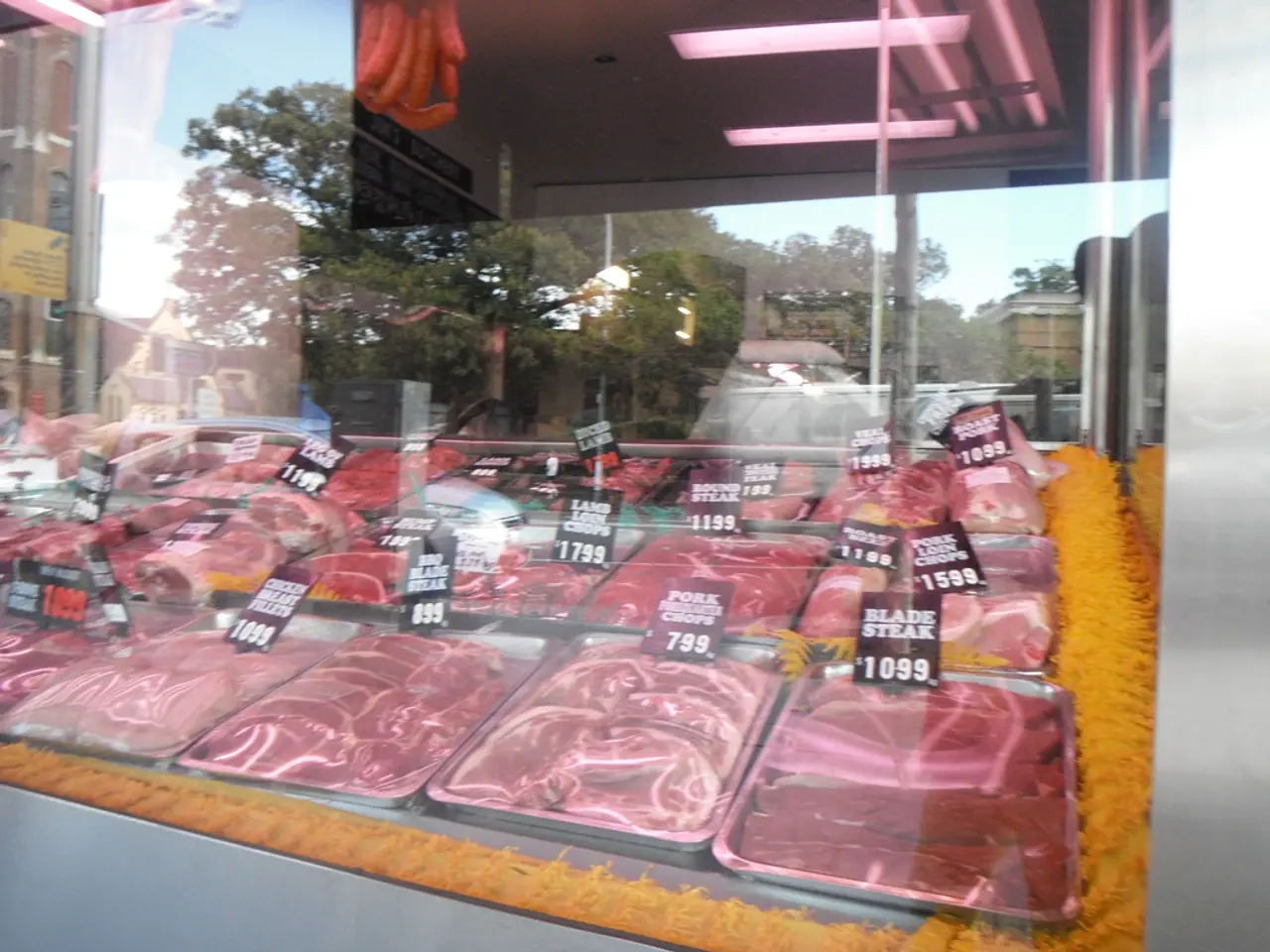The high cost of meat explained
In the year 2022, meat prices in German supermarkets witnessed a significant surge. This increase was primarily attributable to a confluence of factors, including supply shortages, rising production costs, and broader economic influences impacting the agricultural sector.
The decline in cattle numbers within Germany and the EU was a key contributor to the price hike. This decline was due to structural changes in agriculture, stricter environmental regulations, economic uncertainties, and the subsequent reduction or cessation of cattle production by many farmers [2].
The costs of feed, energy, and other operational resources also saw a sharp rise, increasing the cost of livestock rearing [2]. Furthermore, supply bottlenecks disrupted the slaughter cattle supply chain, causing ripples throughout the retail, food service, and processing industries [2].
Despite the price increases, demand for beef remained robust [2]. Additionally, the overall consumer price inflation, increased costs in related sectors such as vegetable oils, and global commodity market fluctuations also contributed to the general rise in food and meat prices during this period [3][4].
However, the demand for pork decreased due to high summer temperatures, with consumers opting for lighter alternatives [5]. Poor harvests and extreme drought periods put producers under significant pressure, leading to higher production costs [6].
The rise in meat prices is a reflection of the increased costs along the entire supply chain, including feed, energy, and labour [7]. Despite the price surge, meat prices began to recover in 2024 and 2025 [8].
In recent weeks, prices for staples such as sausages, schnitzels, and salami have risen [9]. For instance, a poultry sausage (approx. 300 grams) at Lidl increased from 3.39 euros to 3.69 euros, while chicken minute schnitzels (400 grams) at Aldi Süd increased from 4.59 euros to 4.99 euros [10].
Pork schnitzels (320 grams) at Rewe increased from 2.89 euros to 3.29 euros [11]. The price development for beef is expected to increase significantly by the end of the year, particularly for ground beef, burger patties, and fillet [12].
Pork chops are currently 20% more expensive in supermarkets and butcher shops compared to a year ago [13]. Producer prices for German cattle and young bull meat have risen by between 35 and 40 percent this year [14]. The prices for animal feed, especially for grain and soy, have risen sharply on the world market [15].
The situation for veal is similar, with many operations reducing their herds due to unprofitability [16]. Albert Hortmann-Scholten, the head of the department for business economics, market, and business consulting at the Lower Saxony Chamber of Agriculture in Oldenburg, emphasised that the meat market situation is complex and varies depending on the type of meat [17].
Hortmann-Scholten, an expert in the meat market, is responsible for market reports and advises on topics such as milk, meat, and poultry markets [18]. He stated that there is little supply for individual animals since the beginning of the year [19].
In conclusion, the 2022 meat price increase in German supermarkets was a result of reduced cattle availability combined with increasing input costs and strong demand, exacerbated by regulatory and structural shifts in agriculture [2][3]. The situation remains complex, with prices for beef, poultry, and processed sausages continuing to rise.
- Given the rise in meat prices in German supermarkets, people might be inclined to explore health-and-wellness alternatives such as plant-based protein sources for cooking, contributing to the wider lifestyle shift towards vegetarian and vegan diets.
- Faced with the surge in meat prices, some people might turn to science and technology for solutions, such as lab-grown meat or precision fermentation, as potential methods of reducing the cost and environmental impact of food-and-drink production in the future.
- Alongside the higher prices for meat products, the price increases for food-and-drink staples like vegetables and fruits, due to global commodity market fluctuations and consumer price inflation, might prompt individuals to seek budget-friendly recipes for health-and-wellness, fitness-and-exercise, and overall lifestyle improvements.
- The rise in meat prices might prompt health-and-wellness enthusiasts to prioritize dietary diversity, including the consumption of fruits, vegetables, whole grains, and lean proteins, to maintain a balanced lifestyle while keeping food costs manageable.




